|
Bicycles
|
Excluding Bicycles From Trails
Bicycles are an excellent form of transportation and fun. They are small,
non-polluting, and offer the rider good exercise. They don't take up parking spaces
(or minimal) and don't require expressways to drive them on. A pleasant summer day's
ride on a bicycle is refreshing and relaxing.
However....there is another side to bicycling that can spell trouble for natural and
wilderness areas. Irresponsible mountain bicyclists can wreak havoc in such areas.
Mountain biking is a challenging sport, and by its very nature its adherents prefer
rugged natural landscapes. Responsible mountain bike riders avoid sensitive and
non-impacted natural and wilderness areas and stick to designated areas where mountain
biking is encouraged (simply being permitted isn't enough: often the regulators simply
haven't precluded mountain biking in a particular area that may be getting heavily
impacted by the sport). Unfortunately, there are a few who do not respect or understand
the damage that mountain bikes can do to a natural landscape, and will insist upon riding
in areas that are not appropriate for this activity. Alternatively, you may wish to
implement these techniques to prevent intrusion upon private property.
|
| |
| This page presents some ways to exclude bicycles from trails or from an entire area.
Please bear in mind that the intent is not to hurt the cyclist or damage their
bicycles, but to make the trail or area unattractive to them for riding, to encourage them
to explore on foot. All of the suggestions on this page deal with excluding bicycles while still allowing
walkers access. There are situations where this makes sense. However, in cases
where all human activity along a trail is detrimental it may be more appropriate to close
off the trail to all access. For more information on this, please see the Trails
section of this website. |
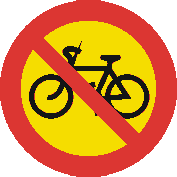 |
|
| |
|
| |
|
Bicycles are subject to various physical
limitations
that walkers are less subject to: |
|
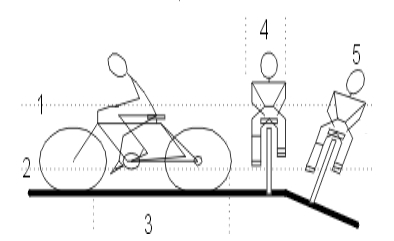
|
| |
1. Minimum overhead clearance required
2. Minimum undercarriage clearance
3. Minimum horizontal length (turning space, contact of tires
on ground, etc)
4. Minimum physical width
5. Maximum grade tolerance (uphill/downhill as well as
sideways-leaning grade)
6. Surface quality limitations |
|
| |
|
One can use some or all of these limitations to exclude bicycles from a
trail or an area.
Keep these limitations in mind as you read through the following suggestions.
|
| |
You can use these
techniques to either:
1.
Exclude bicycles from an area
2. Slow bicycles down within an area |
| |
You can implement the
obstacles in two ways: |
| |
| 1. Keep the obstacle as natural-looking as possible. So, if a
fallen tree is placed across the trail, make it appear as though the tree has indeed
naturally fallen across the trail. This enhances the natural look of the trail and
the area in general. Unfortunately, well-meaning people walking along may remove the
obstacle, feeling that they are being helpful. |
| |
| 2. Build structures that are clearly intended to exclude bicycles.
The advantage of this method is that it gives a clear message that bicycles are not
appropriate for this trail. However, the drawback of this method is that the trail
looks less natural. |
| |
|
| |
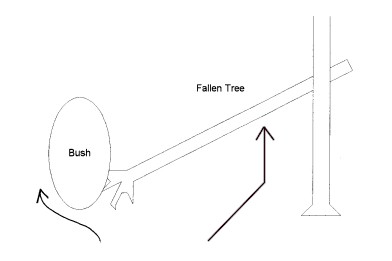 |
Fallen Tree
Place a fallen tree across the trail low enough to cause bicyclists problems in getting
past, but hopefully not low enough that walkers have too much trouble getting under it. As
well, you must ensure that bicycles cannot detour around this obstacle. The ideal
situation would have a bush or similar object to help prevent detours. |
|
| |
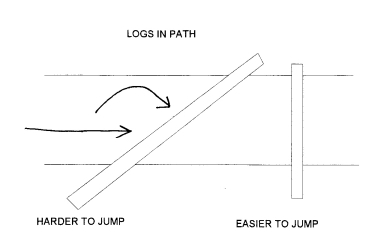 |
Fallen log across trail
Place logs across the path to make it difficult for bicycles to pass. If the logs
are placed perpendicular across the trail, mountain bikers see this as a challenge and
will jump over the log without much speed decrease.
A log placed diagonally across the trail makes this much harder to do,
particularly if the log is very smooth. Also, ensure that there is no room for the
cyclist to angle in for a perpendicular jump across the diagonally-placed log. |
|
| |
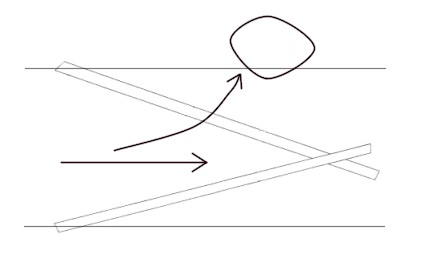 |
Angled logs across trail
A more formal log barrier would be two logs joined together in a "V". The
log "V" could be attached to the ground here as well. Again, the intent is
to make it difficult for the cyclist to jump the log. Smooth logs are more difficult
to attempt to jump, since they will cause the bicycle's wheel to skid along the log.
Use this type when you want to make it clear that bicycles do not belong on the trail. |
|
| |
| You could also place a boulder in the way to discourage angled
jumping, as in the picture below. |
| |
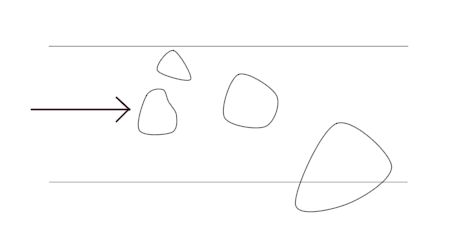 |
Rocks and
boulders
Place rocks and boulders in the trail. They should be large enough to discourage
cyclists, yet small enough that they don't impede walkers too much. Again, try to
ensure that the bicycles cannot detour around the obstacles.
Place the rocks in as natural a configuration a possible. |
|
| |
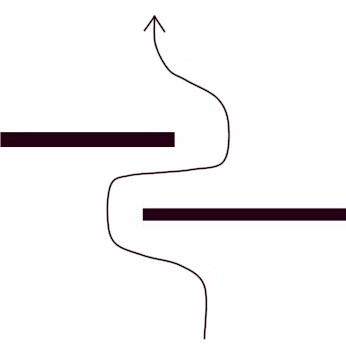 |
Offset gates
These are useful mainly to slow down cyclists, rather than completely exclude them.
However, some will not want to bother going through them (too much trouble) especially if
there are a lot of them.
This method is hard to create and
still maintain a natural appearance.
|
|
| |
|
Don't overlook the obvious
methods as well:
|
| |
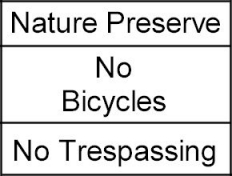 |
Signage
Signs can placed at entrances to the trail or property. |
|
| |
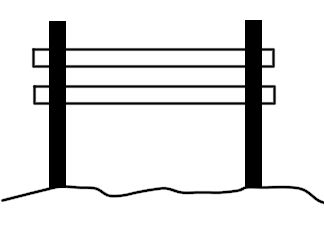 |
Gates
Place actual gates or other barriers to prevent entry. Again, one must take care to
prevent detours around them. |
|
| |
| Inform cyclists Talk to local bicycle stores and cycling clubs. Explain to them why bicycles
should not ride along these particular trails or in this particular area. Most
cyclists are cooperative, if they are first informed. |
| |
|
| |
|
Again, it should be emphasized that cycling is a wonderful activity and
sport. However, there are certain places where bicycles are simply not appropriate.
With thanks to Peter L. for his valuable help and research in
creating this page and the graphics.
|
|
|
| |
| |